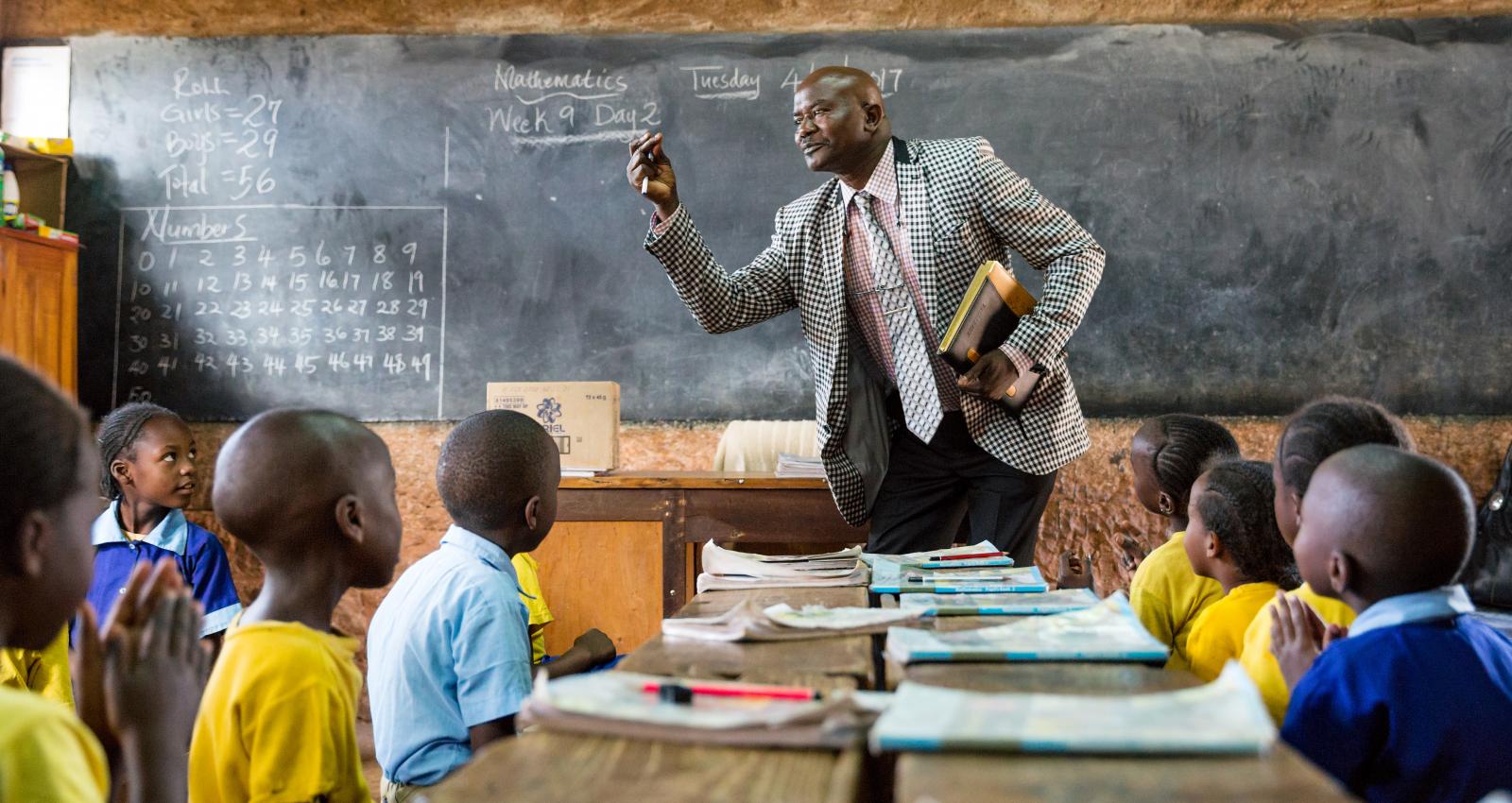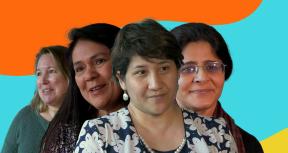The first two blogs in this series discussed the importance of good teachers and how such teachers are “made” by quality training, both before they enter the profession and while they are practicing it. The second blog specifically discussed factors that support preservice training and how these factors are reflected in projects supported by the World Bank Group.
In this final blog of the series, we look at World Bank Group assistance for in-service training, which can be vital to supplement and improve teachers’ instructional practices and knowledge. We also look at how quality can be maintained and sustained when scaling up pilot training programs, a frequent undertaking in World Bank Group projects.
The argument for supporting in-service training
Even where preservice teacher training is high-quality, in-service training is needed to ensure that teachers are up-to date with the latest in pedagogy and changes in curricula. Where preservice training is of variable quality, in-service training can be even more critical for efforts to improve learning outcomes for students.
World Bank Group task team leaders (TTLs) interviewed for IEG's recent report, Selected Drivers of Education Quality: Pre- and In-Service Teacher Training said that programs should address both preservice and in-service systems to ensure greater overall alignment. IEG’s analysis suggests that projects approved more recently are beginning to take this dual approach. This is important, because while the two systems are conceptually different, they are linked. If preservice training is inadequate, in-service training is needed to address shortcomings in teachers’ pedagogical and content knowledge.
In the second blog, we noted that intervening in preservice training can be challenging, due to sensitivities in the political economy and government reluctance to invest in this training. Perhaps for these and other reasons, the World Bank Group has engaged more often to support in-service training. In fact, 68 of the 110 projects approved under the supervision of its Education Global Practice between fiscal year 2013 and FY18 with some element of support for the professional development of teachers exclusively supported in-service training.
How World Bank Group support reflects characteristics of quality in-service training
IEG’s review of the literature found four essential features of quality in-service training: adequate duration, discipline-specific content, active and applied learning based on teachers’ needs and capacity, and follow-up support to provide opportunities for feedback and reflection.
Adequate duration. In-service training in projects supported by the World Bank Group met at least the minimum requirement for duration. Where data were available, IEG found that projects generally supported 50–60 hours of training over 5–20 days, typically at a time when students were on recess. This aligns with expected minimums for such training in the literature.
Discipline-specific content. In-service training supported by the World Bank Group tended to focus more on pedagogical training and less on subject matter training, which may be associated with the need to address shortcomings in preservice preparation. In line with findings from the literature, TTLs interviewed by IEG recognized a need for greater focus on discipline-specific content, given the often-limited capacity of teachers to teach numeracy, literacy, and science.
Active learning. Effective in-service training is characterized by a focus on teachers’ ability to foster skills such as critical thinking, communication, and collaboration. IEG’s fieldwork confirmed this broader focus in World Bank Group-supported in-service training. For example, an impact evaluation found that teacher training in fostering these skills provided under the Vietnam Escuela Nueva Project contributed to a positive effect on the socioemotional skills of children enrolled in supported schools. Consistent with TTL reports, IEG also found some training programs that embodied adult learning principles but, overall, an uneven application of learning that addressed adult learning styles, which suggests room for improvement in this area.
Follow-up support. Changes in approach demanded of teachers can be significant and are seldom simple, and teachers often start at a disadvantage due to their skill levels and gaps in their preservice training. TTLs interviewed by IEG recognized the importance of coaching/mentoring and reported that they were being encouraged to include coaching in operations. Fieldwork identified some cases where participation of teachers from the same school or grade level in training was encouraged to promote peer learning or collaborative work as part of workshops, or a cascade approach to in-service training. But this was not systematic, which suggests a need for greater commitment by all stakeholders to enhance training through more sustained follow-up.
Effective scaling-up of successful projects
The literature suggests that effective in-service training needs to reflect key features of the enabling environment (such as management, governance, and finance), and that training can be more effective when it is part of a larger reform effort and is aligned with standards and assessment and embedded in the local curriculum.
Awareness of these and other factors is particularly important when considering the scaling up of training programs. Less complex forms of scaling up that focus on enlargement or increased numbers of programs without seeking to affect systems—known as horizontal scaling—typically require fewer and less intensive conditions for success.
IEG case studies found that projects supported by the World Bank Group typically pursued horizontal scaling and have done so successfully—albeit supported by elements of local capacity that might not be equally available in less-developed countries. For example, scaling of training in Ghana under the Untrained Teachers Diploma in Basic Education project was implemented by teacher colleges and supported by improved certification requirements and data on the numbers of unqualified teachers.
However, horizontal scaling that increases the breadth of training coverage without ensuring the depth and sustainability of the training engagement is less likely to achieve long-term changes in teaching practices. Most projects explored by IEG had no plan to extend training, particularly funding, beyond the life of the project. This may be associated with the World Bank Group’s short-term, project-based funding model.
More involved, complex, and systemic scaling—known as vertical scaling—requires time and sustained attention and must be supported by influential champions and resources. Notably, the six cases of vertical training explored by IEG showed evidence that targets had been met for teachers trained in all cases, but the training was sustained by the government in only one instance.
This brings us to the end of the series, and we thank you for staying the course! The core lesson is that good teachers and good teaching underpin quality learning outcomes, which are central to any education system and critical to human development.
For more detail, including data and literature reviews, please visit Selected Drivers of Education Quality: Pre- and In-Service Teacher Training.








Add new comment